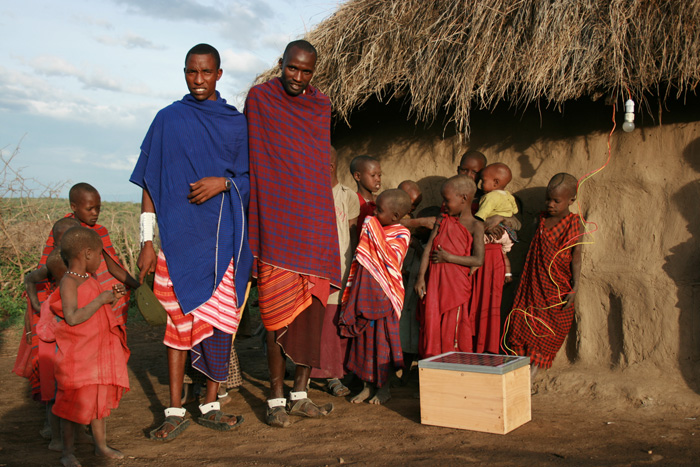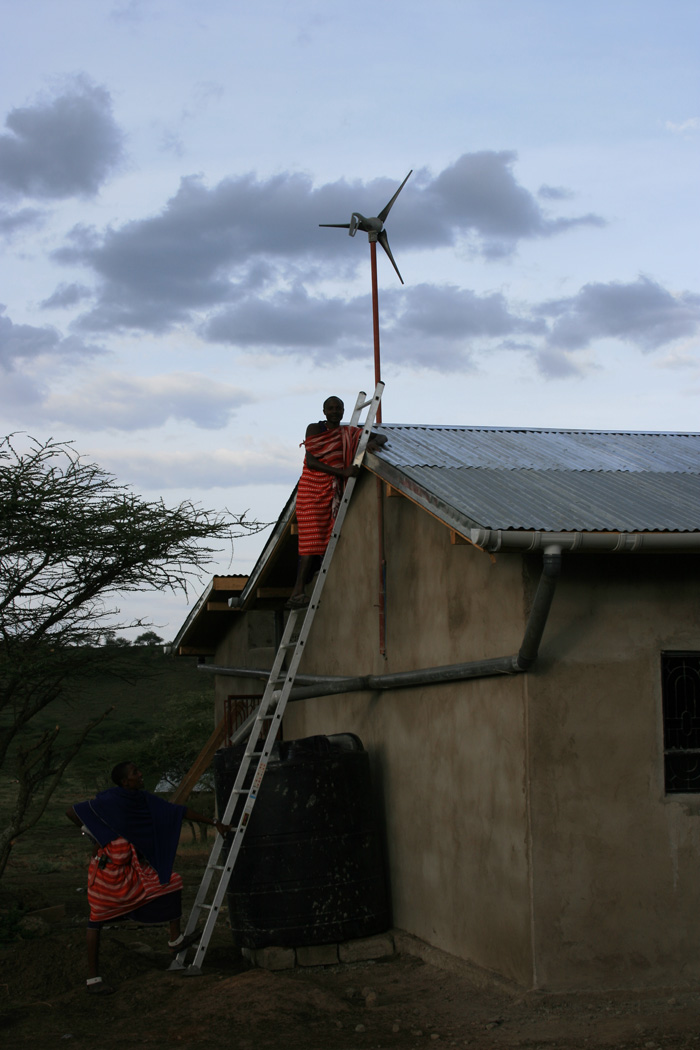DATABASE
BEST-RAY bringing energy services to Tanzanian rural areas
completed
Country
Tanzania
Budget
500.000 - 3M $
Year
2008
Issue
Solutions
Link
www.best-ray.com
Abstract
The project provides sustainable energy services in 2 Tanzanian communities, 40,000 people. It has three main components: training of local people and installation of energy-efficient stoves, provision of basic access to electricity to schools and public places, opening of two Community Energy Resources Centres to provide permanent energy services.
Project Description
The Oldonyosambu and Ngarenanyuki communities, 40,000 people, have no access to modern energy services. This makes the communities exposed to smoke-related health problems, lack of modern educational and health services, poor communication and employment opportunities. The communities are located only 70km from Arusha, a modern Tanzanian town. The development divide between urban and rural area is striking especially for the young generations. The three-year project 3 years project is aimed at shaping a comprehensive strategy to offer the two target communities basic energy services such as photovoltaic (PV), small hydro systems, biogas and energy efficient stoves to its local schools and public places. Local staff are offered for all installations and there is the opportunity to learn how to install the system as well as the adequate training during the project implementation. Experienced technicians offer their services to local customers at two Community Energy Resources Centres (CERC). The CERCs are the core of the strategy where all project experiences and technologies are collected and energy-related services are provided in the long run. CERCs are owned by the local Government and managed by a Cooperative. In addition the project facilitated the constitution of 15 cooperatives of women to build energy-efficient stoves in private houses, cooperated with the Arusha and Meru Districts preparing sustainable energy guidelines, installed computer rooms in secondary schools and built a small hydro turbine with a local partner.
BENEFICIARIES
40,000 people having access to basic energy services, 17 primary schools, 4 secondary schools, 10 health centres and 7 village offices.
Results
Two CERCs up and running, offering PV installation, energy efficient stove technologies, domestic biogas, tree seedlings for energy use, energy related services, mobile charging, computer, internet, photocopying. A CERC as the coordination point of 15 women cooperatives and of energy technicians. 17 primary, 4 secondary schools provided with electricity services as well as energy efficient stoves for cooking, all secondary schools with computer rooms. One-year training periods. Students from the rural area enrolling for the first time in the national examination for computer literacy. All health centres and public offices endowed with small PV systems for light and communication. Over 100 PV systems for private uses. 400 efficient stoves built by 15 women cooperatives (4% of households). 24 domestic biogas plants. 3 tree nurseries inaugurated. One 3.2 kW small hydro turbine installed in secondary school, one built in Arusha Technical College and installed in a local cooperative. Permanent energy services now available in the area.
Business Model
Two CERC opened, a cooperative formed. Technicians recruited and trained from the local community. Installation in schools and public offices also serve as practical training for local technicians. At year 3, both CERCs offering energy services. Last year to work with local technician and project staff on private installation in PV, hydro, energy efficient stove and biogas. Local and District level involved in the project. Customers pay the services at the CERC.
Lessons Learnt
There is a demand for energy services in rural areas. Nevertheless scattered settlements make it difficult to reach potential customers even with distributed solutions. Energy devices may be sold at CERCs but home installations are more expensive in rural areas given logistic effort. Skilled technicians tend to move to town for better opportunities. It is fundamental to focus on beneficiaries’ needs but communities without electricity will understand how to best use the service once they have access to. Electricity provides communities with new opportunities. It takes time to seize them. Priority has to be given to national policies to make the energy services functional to the country’s development targets.
Key Feature
The project structure is designed to provide modern energy services in two specific Wards and to start up two CERCs to offer those services in the long run. The project can be replicated elsewhere but the model needs a starting up capital and available human resources that it is not easy to find. It is a demonstration project to find out a possible way to bring energy services to a remote area. After 3 years from completion, the PV activity scaled-up on a business basis with some 200 small systems installed by trained technicians per year. The demand of efficient stove and biogas from private household has been very limited whereas there is a demand of large efficient stoves by institutions, mainly schools. Small hydro activity scaled-up within Arusha Technical College, now running hydro projects at national level. The project was implemented with local partners, a partner for each technology was selected. All equipment and the CERC handed over to project partners and beneficiaries.
Other significant information
The impact of electricity services may be measured, specifically in secondary schools where an annual budget is available. Most schools are boarding. In a typical school the introduction of an efficient stove can save 80% of wood cost, 3,000 €/y. Savings are usually directed to improve the diet. Efficient stoves cook better and faster. This makes the management of some 800 lunches and dinners per day easier. Electricity is used for lighting purposes, both in dormitories and in classes. This reduces the use of kerosene and the related risk of fire and allows students to have extra study time to face the national exams. Electricity is also used for refrigeration of food and this has introduced meat in students’diet, for computers, for purification of water with UV filters, for incubating eggs, for photocopying, for TV and communication services. Diesel and kerosene saving per year may be estimated in 4,000 €. The diesel generator provides backup service a few hours a day if needed.
Main Donor
European Union
(Government)
Implementing Actor
Istituto Oikos (NGOs)


